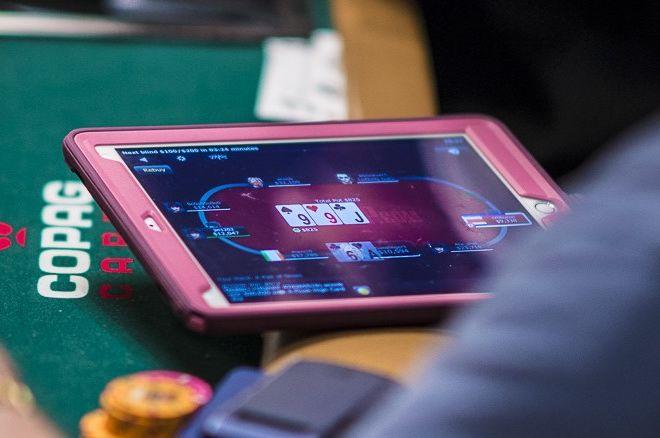Big Mistakes When Playing Online Cash Deep-Stacked

Playing with deep stacks in a cash game can sometimes lead to big mistakes.
Most often in small stakes cash games — for example, playing online poker at $0.50/$1.00 (100NL) — these mistakes spring from a misunderstanding of one’s own range. In other words, problems arise from a player not being aware from the preceding action what constitutes the top of one's range, what’s on the bottom, and what’s in the middle.
What follows is a hand of six-handed 100NL illustrating this very point, one precipitating a great deal of elation and loss from the two players involved.
What is your range?
The player under the gun did the initial raising to $3. The button was the three-bettor, making it $11 to go. Both were deep, with effective stacks of $340 (or 340 big blinds). The UTG player called and the flop came 5♦4♦2♣.
The action was pretty standard on the flop — a check, a $12 bet from the button, and a call.
The turn was the 8♠. Check again, a bet to $30, then a check-raise to $94.
At this point both players could have the nuts, but the button — the player who has been barreling — should have more straights than the player under the gun. After all the button can three-bet with Ax3x-offsuit sometimes and 7x6x-offsuit sometimes, as well as with all eight of the suited combinations of both hands.
But UTG never brings it in with offsuit hands such as those, nor does the UTG player always call a three-bet out of position with those hands. (UTG might four-bet Ax3x-suited occasionally, and might fold 7x6x-suited, too.)
These straights, or a set, are what the turn check-raise is representing. After a call there would still be 223 big blinds behind (effectively), so the button has some leeway to call and use position on the river. Unless the button has a very specific read on UTG's tendencies in this type of situation, the button should have no turn three-betting range — just a range to call and one to fold.
Choose to continue wisely
There are two types of hands that the button should continue with in this situation for certain: hands that are nutted, and hands that can improve. We discussed the first category above. The obvious choice for the latter group would be flush draws, especially but not limited to the nut-flush draw or a flush draw that includes the 7♦ or 6♦.
A hand like pocket aces does not find itself in either category. If it improves to a straight it will be a bad straight to have. The ability to block a wheel in this exact situation isn’t that helpful, either, since it also blocks potential bluffs like Ax2x, Ax4x, Ax5x, and Ax6x. And if the button holds the ace of diamonds, he blocks the key bluffing hand of under the gun — the nut-flush draw.
The third category, non-nutted hands that can’t improve, should continue with a high degree of trepidation and retain the option to fold right now, in particular if the button doesn’t expect bluffs to come or expects under the gun always to fire all in on the river (and is unwilling to call with these hands).
One benefit of calling with one’s strongest hands is to be able to call and then fold later with mediocre hands or hands that could have improved to the nuts but did not on some assortment of runouts.
A brick is a brick is a brick?
The button did call the turn check-raise, and the river was the 4♥, making the final board 5♦4♦2♣8♠4♥. The UTG player went all in for the aforementioned $223. The button called with A♦A♣.
Such a call was a big mistake regardless of results.
As discussed, the button can have many straights in this situation. If he is going to call down with some pocket aces, the half without the ace of diamonds make the most sense by a large margin.
The difference between your opponent potentially bluffing eight combinations of nut-flush draws here or not being able to hold any of those eight combinations is very large in this situation. Every combination counts in deep-stacked pots that result in an all-in bet, so nine potential bluff combinations (A♦5♦, A♦6♦, A♦7♦, A♦8♦, A♦9♦, A♦10♦, A♦J♦, A♦Q♦, and A♦K♦) is incalculable.
The result though, was very predictable. Under the gun turned up with a strong value hand. One of the strongest in fact — 8♣8♥ for a turned set and a rivered full house.
Actually, on the flop UTG has a pretty clear check-fold. But on the turn, if button is going to lose his whole stack with aces, the preflop call with eights seems justified.









